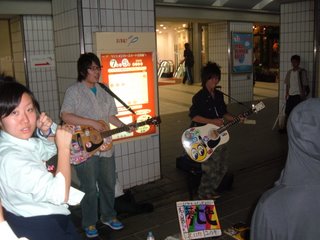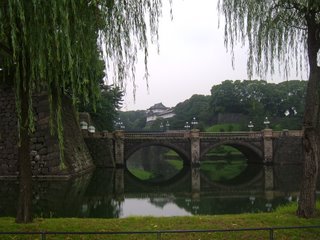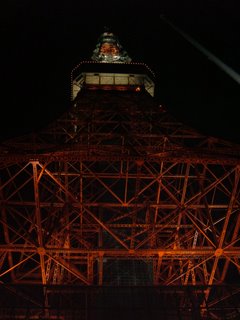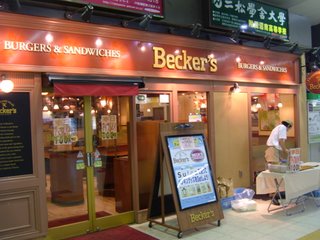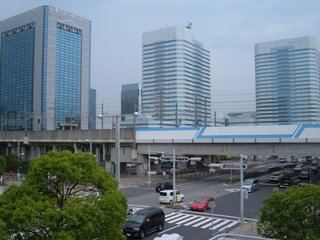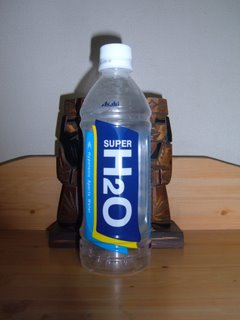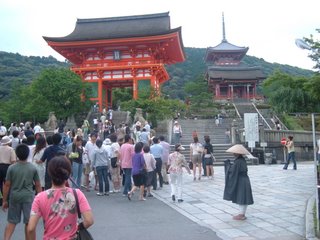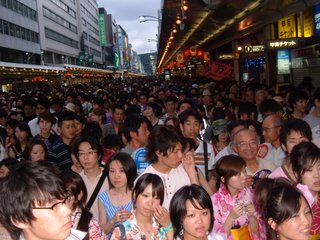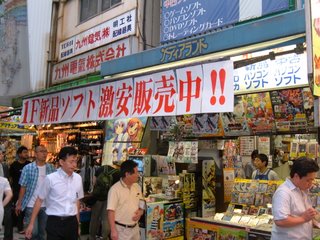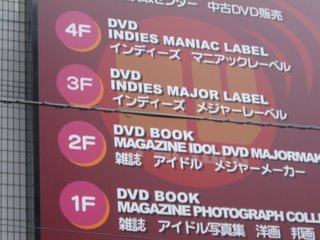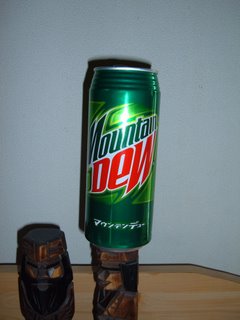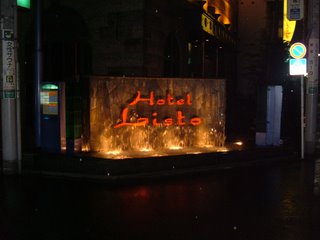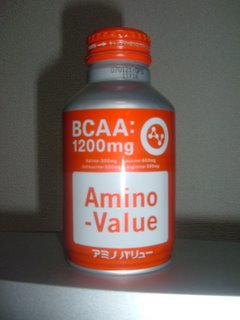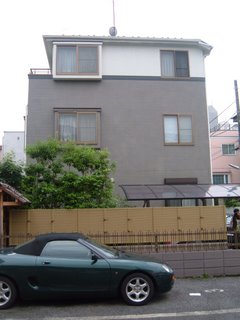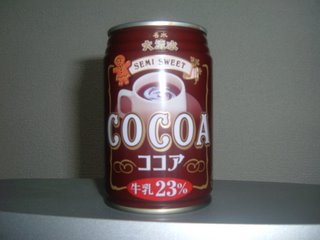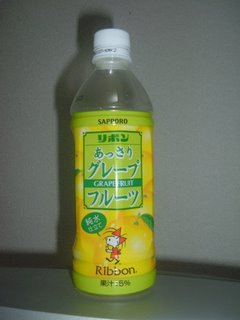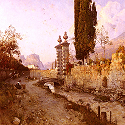Whoever said 'you make your own luck' never dealt with Kuroneko Shipping.
So I'm told by Kudo-san that the shipping company (that's taking my bags to my new host family) is going to be at the house I'm living in at 10:00 on Saturday, and that I'll have to fill out some forms and stuff so I should be ready. Figuring this won't take long, I make plans with Mitchell to do some shopping at Akihabara around 2 in the afternoon. 
Standing in front of the doorway at Takeda-san's house. Insert your own joke here.
The IES Center was closed; the post office closed at 12:30 on Saturdays. I called Mitchell from a public telephone and made it to Akihabara at about 3:15. Total losses: four hours of time, my umbrella (no idea how; I'll buy another one).

This is where I used to live.

Takeda-san's house, which I never realized looks just like mine.
This entire entry, up to this point, was written Sunday morning, therefore the 'hopefully'. "I know exactly what's happening today, I'm all packed, I'm prepared--nothing can go wrong, right?" I thought. Naturally, catastrophe struck. I won't put you through yet another "what can happen to Brice in Japan?" rant, but let's just say I survived in one piece and move on.
Takeshi, the oldest son, met me at the station and walked me back to their house. He explained on the way that he had wanted to pick me up in his car, but the battery had died. So I barely had time to move my luggage upstairs before we were off to get it recharged. The mechanic said the car would need to be driven for about 40 minutes, so Takeshi decided to drive to Yokohama. Although this technically was on the other side of Tokyo and another city altogether, it was only about a three-hour round trip, including an hour stuck in traffic.
Given that I was entering my mild oh-great-an-entirely-new-situation shock I've referenced a few times before, it was really nice to just drive through the city, talk in English/Japanese about various landmarks, and just chill. It was night by the time we came back through Tokyo, and we drove across the Rainbow Bridge to Norah Jones, with the entire harbor lit up and the boats in the bay and it was easy to see how Japan was the best city in the world at night...
...then the Backstreet Boys CD came on and ruined it. Oh well. I'll try and get y'all pictures of my new house and all ASAP.Vending Machine Special #8: Bubble Man... II!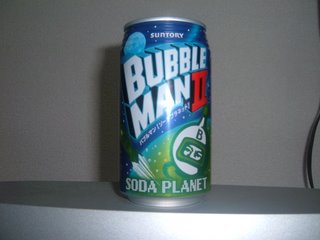 With a can like this, I just had to find out what's inside. It's some sort of green soda, with a vaguely bubble-gummish flavor. If this is what Bubble Man II tastes like, I'm not sure if I want to know much of Bubble Man I.
With a can like this, I just had to find out what's inside. It's some sort of green soda, with a vaguely bubble-gummish flavor. If this is what Bubble Man II tastes like, I'm not sure if I want to know much of Bubble Man I.

